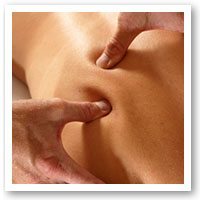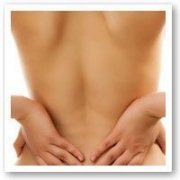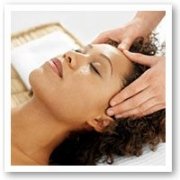Benefits of Trigger Point Therapy
 Trigger Point Therapy focuses on relieving referred pain or sensation (pain, tenderness, pins and needles, numbness and burning). A trigger point is a point of bound / taught fibres in a muscle, often referred to as muscle knots, a point of heightened tenderness or sensitivity, which prevents full usage of a particular muscle. Active trigger points have predictable referral patterns, some causing pain locally to the effected trigger point, others referring to other regions of the body. Due to this referral, a domino effect in terms of pain or injury can occur if trigger points are left untreated; this meaning an area previously unaffected by referred sensation may become affected.
Trigger Point Therapy focuses on relieving referred pain or sensation (pain, tenderness, pins and needles, numbness and burning). A trigger point is a point of bound / taught fibres in a muscle, often referred to as muscle knots, a point of heightened tenderness or sensitivity, which prevents full usage of a particular muscle. Active trigger points have predictable referral patterns, some causing pain locally to the effected trigger point, others referring to other regions of the body. Due to this referral, a domino effect in terms of pain or injury can occur if trigger points are left untreated; this meaning an area previously unaffected by referred sensation may become affected.
From a patients perspective.
Trigger Point Therapy is a compression of the point of tenderness, which temporarily heightens the sensation already experienced due to additional pressure being applied to the area. The pressure must be held and maintained in order to obtain a release; in terms of sensation, it feels as though the practitioner holding the point is slowly releasing pressure, in actual fact the point is releasing / relaxing, which gives a sensation of relief as muscle function is improved and referred sensation is reduced.
Trigger Point Therapy with Massage.
Massaging an area with active trigger points can be painful; however, when massage and trigger point therapy is combined a practitioner can release muscles far more effectively. Remedial massage greatly increases blood flow to muscles, while trigger point therapy releases regions within muscles with restricted blood flow, thus providing nutrients to depleted muscle fibres in a more effective fashion. Active trigger points create a local twitch response (often confused with a muscle spasm); if a trigger point is left active after massage it won’t be long before it becomes tight and sore again due this twitch response, as the muscle is over engaging. Releasing trigger points allows for far greater fibre release with slow / stretching massage, which increases range of movement and encourages capillary growth, resulting in healthier muscle fibres.
In terms of performance: Clients who I have treated with trigger point therapy gain longer periods of relief and suffer less issues with their lymphatic system in terms of acid and other waste build up in their muscles; this meaning greater endurance and performance. If you enjoy sport and like massage, this is definitely something to consider within your fortnightly to monthly massage. Note: Trigger points take time to release, so treatment should be focused on a specific area of the body, not all over, to get the best results.






